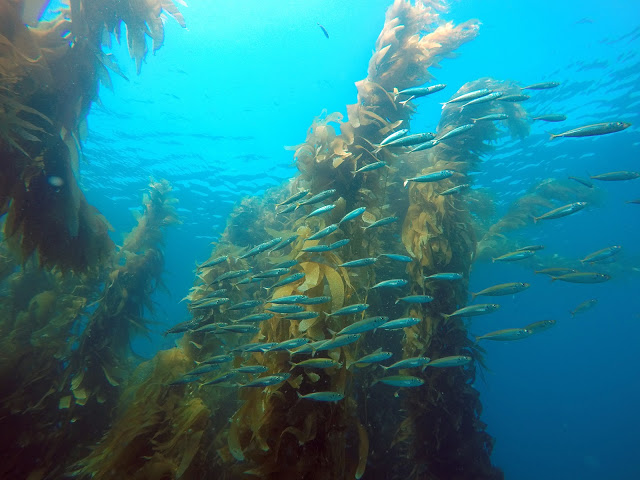
In 1999, the California Legislature passed the Marine Life Protection Act (MLPA), landmark legislation aimed to safeguard the health of California’s marine life through establishing a network of marine protected areas (MPAs). Today, California’s ocean and coast are home to 124 MPAs that cover approximately 16% of state waters and support some of the richest habitats on earth.
MPAs play a critical role in the preservation of California’s iconic coastline and ocean-based economy. Marine life within MPAs is shown to be more biologically diverse, plentiful, and resilient than non-protected areas, providing a buffer to environmental disturbances and climate change. As marine environments face mounting climate stressors, MPAs preserve our fisheries and livelihoods and restore California’s sensitive species and habitats, while attracting tourists to our thriving coastal waters. Importantly, California’s MPAs were designed as an ecological network, and support the health of surrounding waters by contributing to the recovery of species in nearby habitats. In many ways, MPAs serve as ‘hope spots’ for the ocean’s future in a changing climate.
But California’s coast is threatened by more than just climate change. When rain falls on our roofs and streets, the water flows through storm drains and gutters and into our waterways, carrying with it heavy metals, bacteria, and other pollution that makes swimmers sick and harms valuable aquatic life. In order to protect important marine species and habitats from the threat of stormwater, the State Water Board created 34 Areas of Special Biological Significance (ASBS), a type of State Water Quality Protection Area that, like MPAs, serve as a tool to protect and preserve marine ecosystems from human perturbation.
The intent of ASBS was to prevent pollution from running off into sensitive habitats, but the State Water Board later adopted an exemption to allow for the discharge of pollution into ASBS if certain conditions are met. Unfortunately, those conditions are not stringent enough to ensure that natural water quality is maintained in ASBS as required by the law. California Coastkeeper Alliance is now advocating for the State Water Board to remove this exemption and restore the original intent of ASBS to provide a safe haven for marine life.
State Water Quality Protection Areas have the potential to be a valuable tool to protect coastal water quality along with MPAs. But currently only about a third of MPAs have at least some overlap with existing ASBS. In fact, California does have a State Water Quality Protection Area aimed specifically at MPAs (deemed State Water Quality Protection Area – General Protection), but the state has yet to implement this designation since its creation in 2012, leaving MPAs continually vulnerable to pollution. California Coastkeeper Alliance is advocating that the state adopt water quality protections for MPAs by 2030.
California has invested significant resources in the management and monitoring of MPAs. The state is now looking toward the first-in-a-decade management review of the MPA network, which will be conducted in 2022 to evaluate how the network is meeting the goals of the MLPA. In addition to sound science and proper management, California should prioritize policy solutions that bolster the effectiveness of MPAs, including prohibiting stormwater runoff into sensitive marine habitats and creating new water quality protections for these critical ocean hope spots.

Associate Director Natalie Caulk provides operational leadership and manages the ongoing implementation of programs and partnerships of CCKA.



